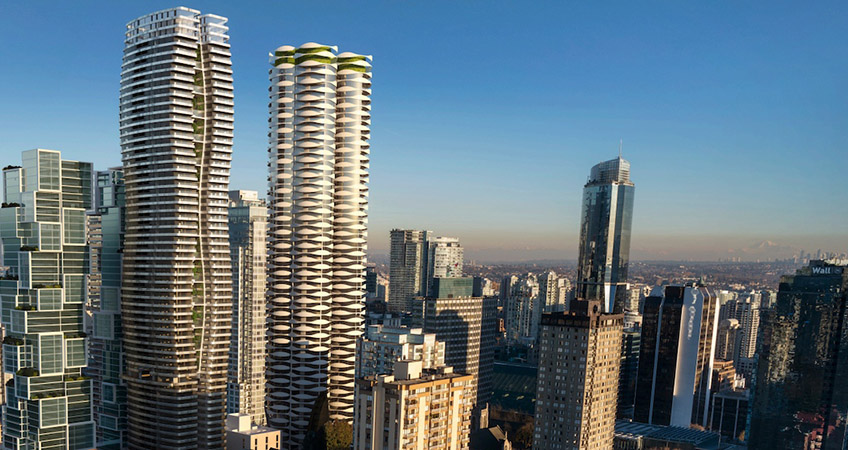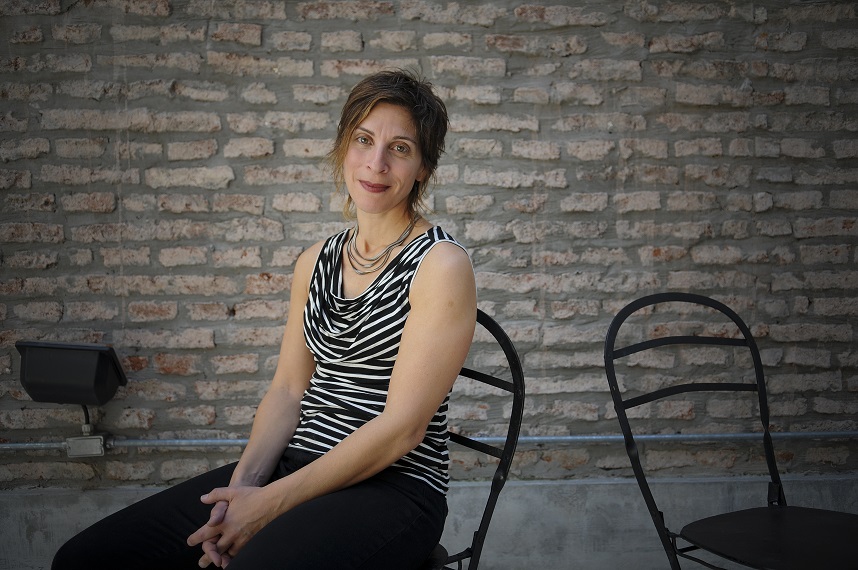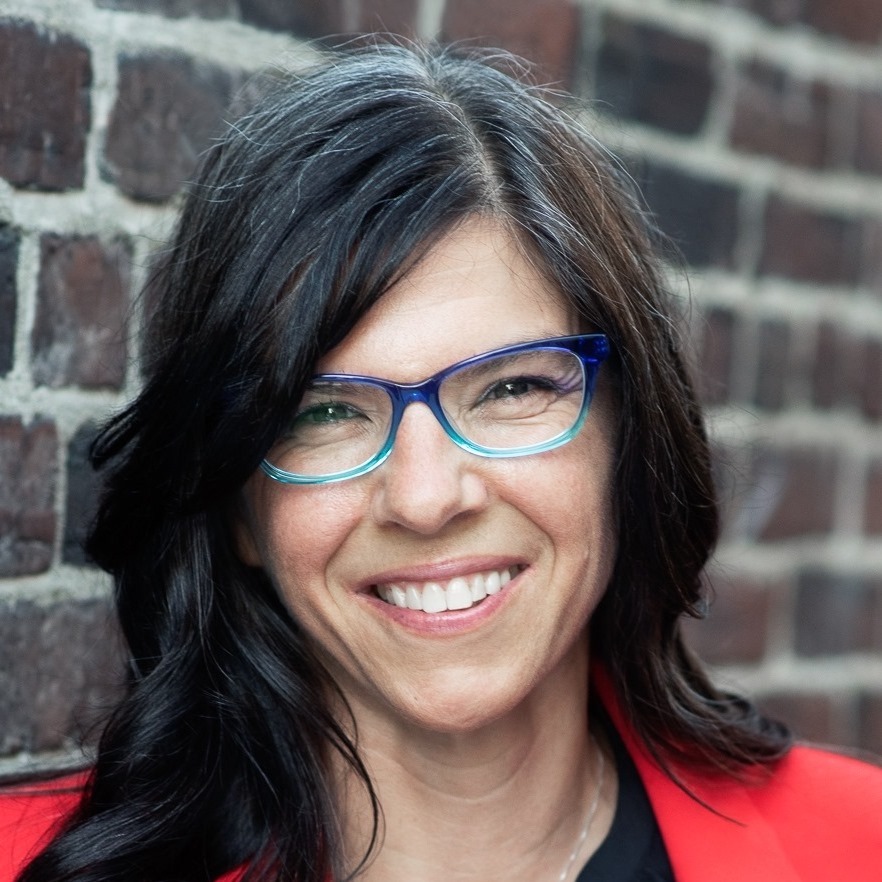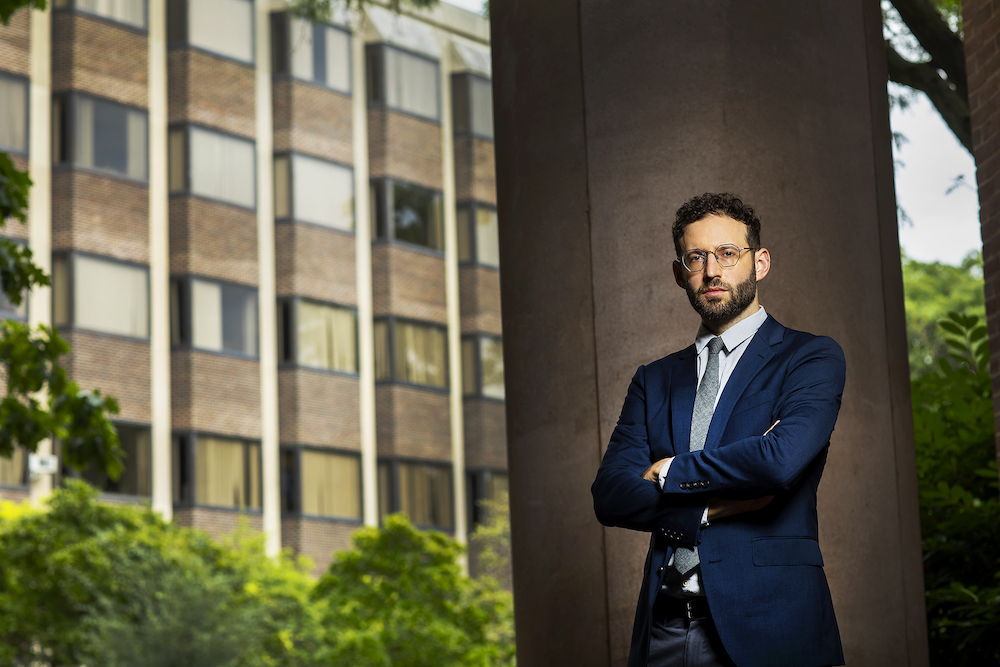Articles Menu

Earlier this year, Vancouver city council approved a new downtown condo tower pitched as one of the greenest skyscrapers on the planet. It “will quickly become a blueprint for future towers in cities around the world,” said the architecture firm behind 1075 Nelson, a 60-story development in the West End that will be built to Passive House standards.
“The planet is on fire,” Rick Gregory, vice-president at Henson Developments, said of using ultra-efficient windows, insulation and ventilation systems resulting in much less energy requirements than a typical tower. “You’re either part of the solution or part of the problem.”
Because 25 per cent of the building’s floorspace will be set aside for social housing, Vancouver mayor Kennedy Stewart also portrayed 1075 Nelson as a step towards addressing the city’s dire affordability needs.
“We’re in a housing crisis, and this is a building on private land with private financing, and we’re still getting 102 social housing units,” Stewart said.
Just down the road from 1075 Nelson is another skyscraper competing for eco-bragging rights in what aims to be the world’s “Greenest City.” The “Butterfly” tower being built by Westbank boasts of “sustainability goals exceeding LEED Gold.”
But when Samuel Stein looks at luxury towers with the latest green technology, he doesn’t necessarily see progress on climate change. “It makes the problem worse as it claims to make it better,” the New York-based housing policy analyst and author of Capital City told The Tyee.
That’s because when such developments market homes to the wealthy for millions of dollars, they drive up already high land prices, he argues. Even those that include some social housing don’t really reverse that trend. “They produce more units in general, but it makes the immediate area much more expensive,” he said.
And those high land prices also drive up greenhouse gas emissions.
Research from Californian cities shows that when lower-income people are forced further from the downtown core into areas with sparser public transit, they become more reliant on private vehicles — and there is reason to think this is also happening in Vancouver. That is a worrying trend, because emissions from private vehicles are currently one of the biggest barriers to the city and region achieving climate targets.

There’s another paradox to building high-priced condos that meet top environmental standards and command sweeping panoramas of nature. They often are purchased as second homes by rich globe-trotters. Though many luxury housing developments in Vancouver meet stringent green building codes, additional research suggests that the climate gains could be eroded by the larger-than-average carbon footprints of their high-income residents.
“That kind of dense living can be climate friendly but there’s no guarantee the people don’t own cars and fly planes all over the place and sit on yachts half the year and all the other stuff the rich do that is incredibly bad for the environment,” Stein said.
To Stein this requires a rethink of what “sustainable” actually means in an urban context. It can’t just be green technology, narrowly-focussed emissions targets and well-wishes of developers and private business. “On every ground that’s not solving the problem,” he said.
If you stopped a random Canadian on a city street and asked them to name the issues that worry them most, housing affordability and climate change would likely be near the top. Polls ranked these as top-three issues during the lead-up to the 2019 federal election. Even with coronavirus upending normal life, the climate emergency is a still a number-one source of concern for 31 per cent of Canadians, according to a September Abacus survey.
And so are out-of-reach home prices. About 84 per cent of people across the country think the federal government’s coronavirus recovery efforts should include investments in affordable housing, an August survey conducted by Nanos Research suggests.
Typically, a warming climate and scarce affordable housing are seen as discrete issues with separate causes, consequences and political coalitions. “Housing fits awkwardly into left climate debates,” explains University of Pennsylvania assistant professor of sociology Daniel Aldana Cohen, who helped research housing legislation for Alexandria Ocasio-Cortez’s Green New Deal.

Even environmentally forward cities like Vancouver and Berkeley have struggled to implement zoning changes that would make single-family neighbourhoods denser and more walkable.
Large build-outs of new affordable homes could, if not done to stringent climate standards, strain our planet’s already tiny carbon budget due to the construction industry’s huge environmental footprint.
Researchers at McGill University have meanwhile linked investments in bike lanes to increasing home prices and gentrification in cities like Chicago and Portland.
But some affordability experts argue that the housing and climate crises share more in common than they appear. “I see them as not competing crises,” Leilani Farha, a former United Nations special rapporteur on the right to housing who now, from Ottawa, helps lead a global affordable housing movement called The Shift, told The Tyee. “They are defining of our moment in history.”
Both of these crises are major sources of anxiety for Canadians. Both of them are exacerbated by business decisions that put private profits above public goods — whether developers building luxury condos that drive up land prices, or oil companies that construct emissions-spiking pipelines. And, an increasing number of experts are realizing, a failure to solve one crisis can make it difficult, if not impossible, to solve the other.
After Andrea Reimer was elected to Vancouver city council in 2008, the Vision majority she belonged to under Mayor Gregor Robertson set two huge goals — to end homelessness and make Vancouver the greenest city in the world. By the time she left city politics in 2018, however, the number of people without homes was at record highs. And though the city’s greenhouse gas emissions fell roughly 12 per cent, that reduction was still short of the 33 per cent decrease by 2020 called for by the Greenest City Action Plan.
“I’ve had time to see how difficult it is to make change from a low position of power,” she told The Tyee of trying to solve systemic crises with scant support from the federal Conservative government of Prime Minister Stephen Harper or successive provincial BC Liberal governments. But the experience of using her council seat to push developers to include affordable units in luxury developments built to high standards of sustainability also taught her another lesson.
“You can’t solve the worst problems of capitalism with more capitalism,” Reimer said. “It doesn’t work that way on climate or housing.” Still, she adds, “I also don’t regret trying given that it was the only option on the table at that time.”

As the price of an average detached home rose to stratospheric heights, lower-income people have been pushed to the edges of Vancouver, or further out into communities like Burnaby, Richmond and Surrey, according to research from the University of Toronto’s David Hulchanski. Here, they are significantly less likely to bike to work (four per cent) than high-earning people (11 per cent). Though both groups drive at around the same rate (60 per cent or so), lower-income residents of Metro Vancouver are more likely to have commute times of an hour or more (13 per cent) versus wealthier residents (eight per cent).
“Because the majority of low-income neighbourhoods are car-oriented sprawl, this is likely due to design rather than preference,” Christopher Cheung wrote in The Tyee.
Policymakers seem to be aware of this disparity. “The design of policies and programs should consider how low carbon options for transportation and buildings can be accessible to all Metro Vancouver residents,” reads a regional report called Climate 2050. Vancouver’s recently approved Climate Emergency Action Plan promises that “climate justice” — meaning solutions that account for income, racial and other disparities — “will be a key part of our work, aiming to overcome historic discriminatory City legacies.”
Yet the plan contains no mention of making housing more affordable. And in the meantime, lower-earners’ reliance on cars is increasing. From 2017 to 2018, “there was a higher proportion of auto trips among lower-income households (40 per cent compared to 36 per cent in 2017),” reads a city report.
This is a major climate problem for the city and region. Though transit use increased slightly across Metro Vancouver from 2008 to 2017, more than 70 per cent of trips across the region are done in private cars, recent TransLink data shows. Regional emissions are so far only one per cent below 2010 levels, far from the 45 per cent reduction targeted for 2030. The top source of emissions — more than one-third — is on-road transportation. As CBC reports: “Cars are still king of the road throughout the region.”
This appears to be a national phenomenon. From 1996 to 2016, the number of commuters who worked over 25 km from a city centre increased in seven major Canadian cities including Vancouver. “This is related to the preference for single-family homes on larger and more affordable lots, located further away from the city core,” Stats Canada concluded.
And it’s a challenge many American cities are also facing. Researchers in California have found that despite the state’s aggressive climate policies, greenhouse gas emissions are increasing because unaffordable home prices are forcing people to make long commutes in their cars. “Put more directly, in order to solve the climate crisis, we have to solve the housing crisis,” two experts argued last year in the New York Times.
The idea of fixing climate change by creating denser neighborhoods reliant on public transit or other non-vehicle forms of travel dates in Vancouver back to before 2006, when Mayor Sam Sullivan introduced the term EcoDensity. But though the concept is now widely regarded as one of our most potentially effective means of lowering urban emissions, it comes with an important caveat: the homes can’t only be for millionaires.

Otherwise, as researchers have documented in cities like Helsinki and New York, the carbon savings you get from denser communities are offset by the higher-than-average consumption patterns of their wealthy inhabitants. University of Pennsylvania sociologist Cohen has calculated that per-capita carbon footprints in New York’s West Village are up to three times higher than similarly dense parts of the Bronx, where incomes are much lower. “For low-carbon densification to work, you need to ensure affordability,” he told The Tyee.
That also applies to someone who can afford to pay $4 million or up to live in a LEED-certified tower in downtown Vancouver. Members of B.C.’s top income quintile produce 27 per cent more emissions than the average person, according to a 2010 report from the Canadian Centre for Policy Alternatives.
Oxfam Canada calculates that the richest 10 per cent of Canadians were responsible for as many emissions through their frequent plane trips, secondary homes and comparatively lavish purchases as the poorest 50 per cent of people in the country.
What this means to Seth Klein, the former BC director of the Canadian Centre for Policy Alternatives and author of the book A Good War, is that cities like Vancouver can’t make meaningful progress on the climate emergency without also addressing the market-driven inequality that exacerbates it. “There’s a remarkable parallel between housing and climate change,” he explained. “You have to tackle them together.”
This article is part of a series produced with financial support from SFU Vancity Office of Community Engagement. Support for this project does not necessarily imply endorsement of the findings nor content of this report. Funders neither influence nor endorse the particular content of reporting. Other publications wishing to publish this series, contact us here. ![]()
[Top image: Experts in Canada and beyond see overlapping solutions to two crises: housing affordability and climate change. This series talks to more than 20 of them. Illustration for The Tyee by Nora Kelly.]